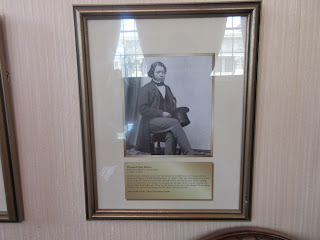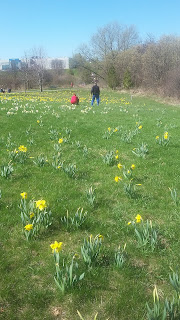Dr. Leonid Sharashkin publishes English-language books about Anastasia, a Russian woman with
remarkable abilities and insights. The author of these books is Russian
entrepreneur Vladimir Megre, who describes his meetings with Anastasia
in the Siberian taiga. Megre’s nine books about Anastasia and her
message of hope to the world, collectively known as the Ringing Cedar
Series, inspired the Anastasia Ecovillage Movement in Russia.
The information contained within the Anastasia books, ideas on practical application of her key concept. One of these is the role of the fully developed human being (referred to in the books as “Man,” with a capital “M”) working with nature to create a harmonious and abundant life. The cultural roots of this vision lie in what the books describe as the Vedic traditions of Russia.
The essence of what she describes is that Man is incomplete without Land. The history of what we are told to call civilization by our schools and authority figures has been the progressive separation of people from the land which had nurtured them and their forbears for millennia, replacing the nurture of nature with the control of culture .
A core element of the vision expressed in the books is that true democracy, abundance, and ecological resilience becomes possible as people return to the structure of what Anastasia calls a “Family Domain” — one hectare of land (2.5 acres) with woods, fruit trees, a vegetable garden, and a small pond — owned outright by a family and passed down through the generations. This hectare becomes a diverse garden – providing unique nourishment to those who live within its energetic boundaries, continuity and connection through the generations, and a base from which true security can be experienced.
The essential thing is to
let yourself be inspired with free and creative thought when planting
your garden of eden, and to let yourself be guided by your intuition,
passion and the feelings of love and joy.
Further, a “Space of Love,” as the books assert, is created within such a
one-hectare plot, and is part of the energy that helps to return people
to right relationship with one another and with the natural world.
At this point, hundreds of Anastasia-inspired ecovillage projects are in the planning stages in Russia, and some are already established. Kovcheg Ecovillage was founded in 2001 when 4 families leased — under a 49-year government lease, and at no charge — about 297 acres (120 hectares) of former agricultural land 87 miles (140 km) southwest of Moscow, in the Kaluga region. As Anastasia advised, people built their homes on individual one-hectare (2.5 acre) plots. In their first 8 years they built more than 100 homes, though not all are finished and heated for winter use. They built the houses mostly by themselves, and at the rate of between 12 and 20 a year.
Agribusiness interests propose that broad-scale industrial agriculture is the only model that can provide reliable, inexpensive food and that the toxicity of inputs, soil depletion and energy inefficiency of the system is acceptable due to a lack of alternatives.
Thus far, this view has been backed solidly by the USDA to the tune of billions in agricultural subsidies that underpin this model — financing the destruction of America's soil and food quality, and rewarding industrial agribusiness as the model to succeed.
But millions of home gardeners in Russia disprove all these ideas and offer a model in which people regain central control of their food system in a very direct way, by growing the majority of their food themselves. In a country with corporate farms using 83 percent of the agricultural land, some 35 million families produce more than 50 percent of the country’s food, growing on small plots which are typically some 25 x 35 yards in size.
In 2016 there were 337 settlements in Russia, seen registered on www.anastasia.ru website.
Links
http://www.eco-kovcheg.ru/index_en.html
http://www.ecovillagenews.org/wiki/index.php/From_Russia_with_Love
http://www.sustainableecovillages.net/kin_domains.php
http://www.sustainableecovillages.net/kin_domains.php
http://kinsdomain.weebly.com/anastasias-vision.html
The information contained within the Anastasia books, ideas on practical application of her key concept. One of these is the role of the fully developed human being (referred to in the books as “Man,” with a capital “M”) working with nature to create a harmonious and abundant life. The cultural roots of this vision lie in what the books describe as the Vedic traditions of Russia.
The essence of what she describes is that Man is incomplete without Land. The history of what we are told to call civilization by our schools and authority figures has been the progressive separation of people from the land which had nurtured them and their forbears for millennia, replacing the nurture of nature with the control of culture .
A core element of the vision expressed in the books is that true democracy, abundance, and ecological resilience becomes possible as people return to the structure of what Anastasia calls a “Family Domain” — one hectare of land (2.5 acres) with woods, fruit trees, a vegetable garden, and a small pond — owned outright by a family and passed down through the generations. This hectare becomes a diverse garden – providing unique nourishment to those who live within its energetic boundaries, continuity and connection through the generations, and a base from which true security can be experienced.
A kin-domain would have some or all of the following features
•A dam or pond to provide a water supply
•Living fences
•Trees planted to provide wood for future generation’s buildings and for firewood where needed.
•Bee-hives
•Farm and companion animals
•A food forest
•Vegetable patch
•An area for the cultivation of grains
Many of these aspects can be easily integrated in the one area.
A kin-domain is not about spending all day working the land for your
next feed, or spending hours grinding grain so you can bake tomorrow’s
loaf of bread. It’s about creating a self sustaining system that
provides all you need. It’s about working with nature, so that nature
will work for you.
About one third (one Quarter to a half) is
to be planted as forest for wood. This can also have fruit and nut trees
as week as vines, herbs, berries etc planted amongst it. Partly this
acts as animal habitat and partly provides wood for future generations
building materials. The area can also provide some grazing for farm
animals such as goats, sheep, cattle etc which can be used for milk or
wool. About 1-4% is used for dams, as well as for
water supply, it can be planted with edible aquatic plants, have fish
and crustaceans etc. A large proportion of the remaining area is devoted
to the intentional food forest area and the production of grains. Near
the house would be a vegetable patch. Of course both the vegetables and
grains could and should be grown within the food forest areas. Bee
hives can be placed anywhere within the wood forest, or other areas.
At this point, hundreds of Anastasia-inspired ecovillage projects are in the planning stages in Russia, and some are already established. Kovcheg Ecovillage was founded in 2001 when 4 families leased — under a 49-year government lease, and at no charge — about 297 acres (120 hectares) of former agricultural land 87 miles (140 km) southwest of Moscow, in the Kaluga region. As Anastasia advised, people built their homes on individual one-hectare (2.5 acre) plots. In their first 8 years they built more than 100 homes, though not all are finished and heated for winter use. They built the houses mostly by themselves, and at the rate of between 12 and 20 a year.
Agribusiness interests propose that broad-scale industrial agriculture is the only model that can provide reliable, inexpensive food and that the toxicity of inputs, soil depletion and energy inefficiency of the system is acceptable due to a lack of alternatives.
Thus far, this view has been backed solidly by the USDA to the tune of billions in agricultural subsidies that underpin this model — financing the destruction of America's soil and food quality, and rewarding industrial agribusiness as the model to succeed.
But millions of home gardeners in Russia disprove all these ideas and offer a model in which people regain central control of their food system in a very direct way, by growing the majority of their food themselves. In a country with corporate farms using 83 percent of the agricultural land, some 35 million families produce more than 50 percent of the country’s food, growing on small plots which are typically some 25 x 35 yards in size.
In 2016 there were 337 settlements in Russia, seen registered on www.anastasia.ru website.
Links
http://www.eco-kovcheg.ru/index_en.html
http://www.ecovillagenews.org/wiki/index.php/From_Russia_with_Love
http://www.sustainableecovillages.net/kin_domains.php
http://www.sustainableecovillages.net/kin_domains.php
http://kinsdomain.weebly.com/anastasias-vision.html






























































